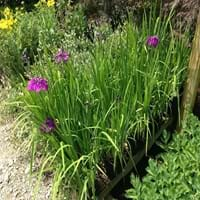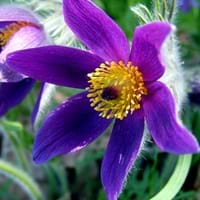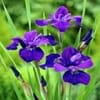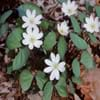Life Span
Perennial
Annual and Perennial
Origin
Russia, Siberia, China, Japan
Europe, Eastern Europe, Southern Europe, Western Europe, United Kingdom
Types
Not Available
Pulsatilla vulgaris, Pulsatilla vulgaris rubra, Pulsatilla vulgaris alba
Number of Varieties
Not Available
Habitat
Boggy areas, gardens, meadows, Shores of rivers or lakes
meadows, Slopes, Wooded slopes
USDA Hardiness Zone
3-9
5-7
Sunset Zone
1a, 1b, 2a, 2b, 3a, 3b, 4, 5, 6, 7, 8, 9, 10, 14, 15, 16, 17, 18, 19, 20, 21, 22, 23, 24
2b, 3a, 3b, 4, 5, 6, 15, 16, 17
Habit
Clump-Forming
Clump-Forming
Flower Color
Lavender, Blue Violet
Indigo, Purple, Violet
Flower Color Modifier
Bicolor
Not Available
Fruit Color
Brown
Greyish Brown
Leaf Color in Spring
Green, Light Green
Light Green
Leaf Color in Summer
Green
Light Green
Leaf Color in Fall
Green, Brown
Light Green
Leaf Color in Winter
Light Green
Light Green
Leaf Shape
Linear
Rosette
Plant Season
Spring, Summer
Spring
Sunlight
Full Sun, Partial Sun, Partial shade
Full Sun
Type of Soil
Clay, Loam, Sand
Loam, Sand
The pH of Soil
Acidic, Neutral
Neutral, Alkaline
Soil Drainage
Well drained
Well drained
Bloom Time
Early Summer
Early Spring, Spring
Tolerances
Drought
Drought
Where to Plant?
Container, Ground, Pot
Ground, Pot
How to Plant?
Seedlings
root cutting, Seedlings
Plant Maintenance
Medium
Medium
Watering Requirements
Do Not over Water, Water Deeply, Water slowly, and allow to dry completely between soakings, Water twice a day in the initial period
Medium
In Summer
Lots of watering
Lots of watering
In Spring
Moderate
Moderate
In Winter
Average Water
Average Water
Soil pH
Acidic, Neutral
Neutral, Alkaline
Soil Type
Clay, Loam, Sand
Loam, Sand
Soil Drainage Capacity
Well drained
Well drained
Sun Exposure
Full Sun, Partial Sun, Partial shade
Full Sun
Pruning
Cut or pinch the stems, Pinching, Remove damaged leaves, Remove dead branches, Remove dead leaves
Remove damaged leaves, Remove dead branches, Remove dead leaves
Fertilizers
All-Purpose Liquid Fertilizer, Apply N-P-K, Nitrogen
All-Purpose Liquid Fertilizer
Pests and Diseases
Aphids, Red blotch, Rhizome rot, Slugs, Snails, Viruses
Cutworms, Larvae of Agave Weevil
Plant Tolerance
Drought, Full Sun, Variety of soil types
Drought
Flower Petal Number
Single
Single
Foliage Texture
Medium
Fine
Foliage Sheen
Matte
Matte
Attracts
Bees, Butterflies, Flies, Snails
Not Available
Allergy
Skin irritation
convulsions, Diarrhea, Not Available, Stomach pain, Vomiting
Aesthetic Uses
Beautification, Bog Garden, Bouquets, Cottage Garden, Showy Purposes
along a porch, deck or patio, Showy Purposes
Beauty Benefits
Not Available
Not Available
Environmental Uses
Air purification
Air purification
Medicinal Uses
Alterative, Anthelmintic, Antidote, Appetizer, Depurative, Diuretic, Hepatitis
Not Available
Part of Plant Used
Leaves, Root
Not Available
Other Uses
Basketary, Fibre
Showy Purposes
Used As Indoor Plant
Yes
No
Used As Outdoor Plant
Yes
Yes
Garden Design
Bog Garden, Cutflower, Feature Plant, Mixed Border, Water Gardens
Alpine, Mixed Border, Rock Garden / Wall
Botanical Name
IRIS ensata
PULSATILLA vulgaris
Common Name
Iris
Japanese iris
Pasque Flower, wind flower, prairie crocus, Easter Flower, meadow anemone
In Hindi
Japanese iris
Pasque Flower
In German
Japanese iris
Kuhschellen
In French
iris Xapanese
Pasque Flower
In Spanish
Iris Xapanese
Pasque Flower
In Greek
ιαπωνική ίριδα
Pasque Flower
In Portuguese
íris japonesa
Pasque Flower
In Polish
japońskie iris
Sasanka
In Latin
Iris Italica
Pasque Flower
Phylum
Tracheophyta
Vascular plant
Class
Magnoliopsida
Magnoliopsida
Order
Asparagales
Ranunculales
Family
Iridaceae
Ranunculaceae
Clade
Angiosperms, Monocots
Angiosperms, Eudicots
Subfamily
Not Available
Not Available
Number of Species
Not Available
Importance of Japanese Iris and Pasque Flower
Want to have the most appropriate plant for your garden? You might want to know the importance of Japanese Iris and Pasque Flower. Basically, these two plants vary in many aspects. Compare Japanese Iris and Pasque Flower as they differ in many characteristics such as their life, care, benefits, facts, etc. Every gardener must at least have the slightest clue about the plants he wants to plant in his garden. Compare their benefits, which differ in many ways like facts and uses. The medicinal use of Japanese Iris is Alterative, Anthelmintic, Antidote, Appetizer, Depurative, Diuretic and Hepatitis whereas of Pasque Flower is Not Available. Japanese Iris has beauty benefits as follows: Not Available while Pasque Flower has beauty benefits as follows: Not Available.
Compare Facts of Japanese Iris vs Pasque Flower
How to choose the best garden plant for your garden depending upon its facts? Here garden plant comparison will help you to solve this query. Compare the facts of Japanese Iris vs Pasque Flower and know which one to choose. As garden plants have benefits and other uses, allergy is also a major drawback of plants for some people. Allergic reactions of Japanese Iris are Skin irritation whereas of Pasque Flower have convulsions, Diarrhea, Not Available, Stomach pain and Vomiting respectively. Having a fruit bearing plant in your garden can be a plus point of your garden. Japanese Iris has no showy fruits and Pasque Flower has no showy fruits. Also Japanese Iris is flowering and Pasque Flower is not flowering . You can compare Japanese Iris and Pasque Flower facts and facts of other plants too.





